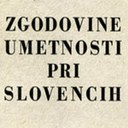0117 Zwischen Methodologie und Ideologie: Slowenische Kunsthistoriker der Wiener Schule nach 1945
Identifiers (Article)
Identifiers (Files)
Abstract
The institutionalisation of Slovenian art history began in 1913, when France Stele (1886-1972), a student of Max Dvořak (1874-1921), was appointed the conservator of the province of Carniola. It became fully established in 1919, when, after the dissolution of the Austro-Hungarian Monarchy, the University of Ljubljana was founded. The paper analyses the activities of three art historians, in addition to France Stele also Izidor Cankar (1886-1958) and Vojeslav Mole (1886-1973), who shaped Slovenian art history between the two world wars. After the end of World War II, all aspects of life were completely subordinated to the Soviet system of the one-party communist state. Ideological suitability was the only standard of acceptability, also at the university. In the immediate post-war period, the older generation of art historians, who were educated in the Western European tradition, mostly in Vienna, were placed in a completely new ideological-political context, which has highly influenced the development and methodology of the discipline until the present day.
Statistics


License

This work is licensed under a Creative Commons Attribution-NonCommercial-NoDerivatives 4.0 International License.



